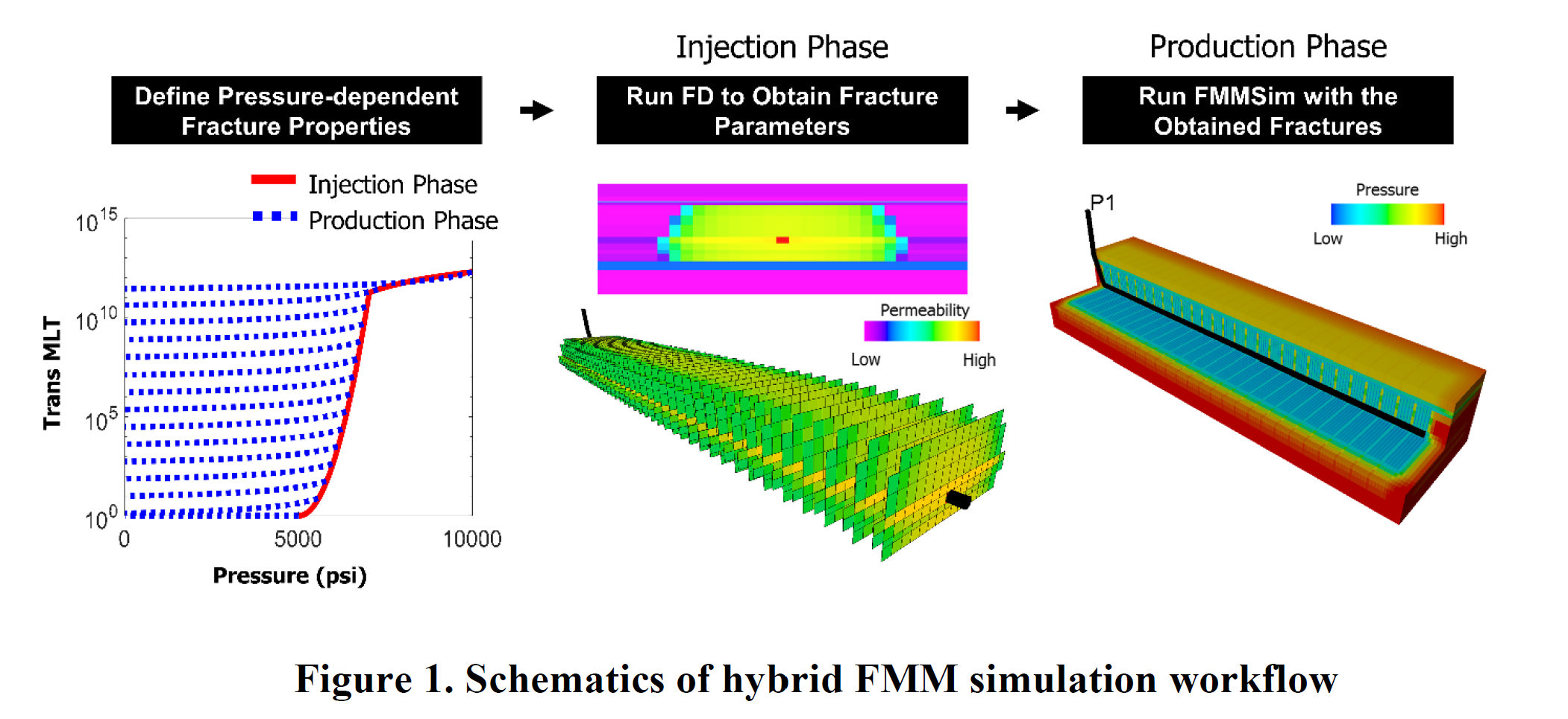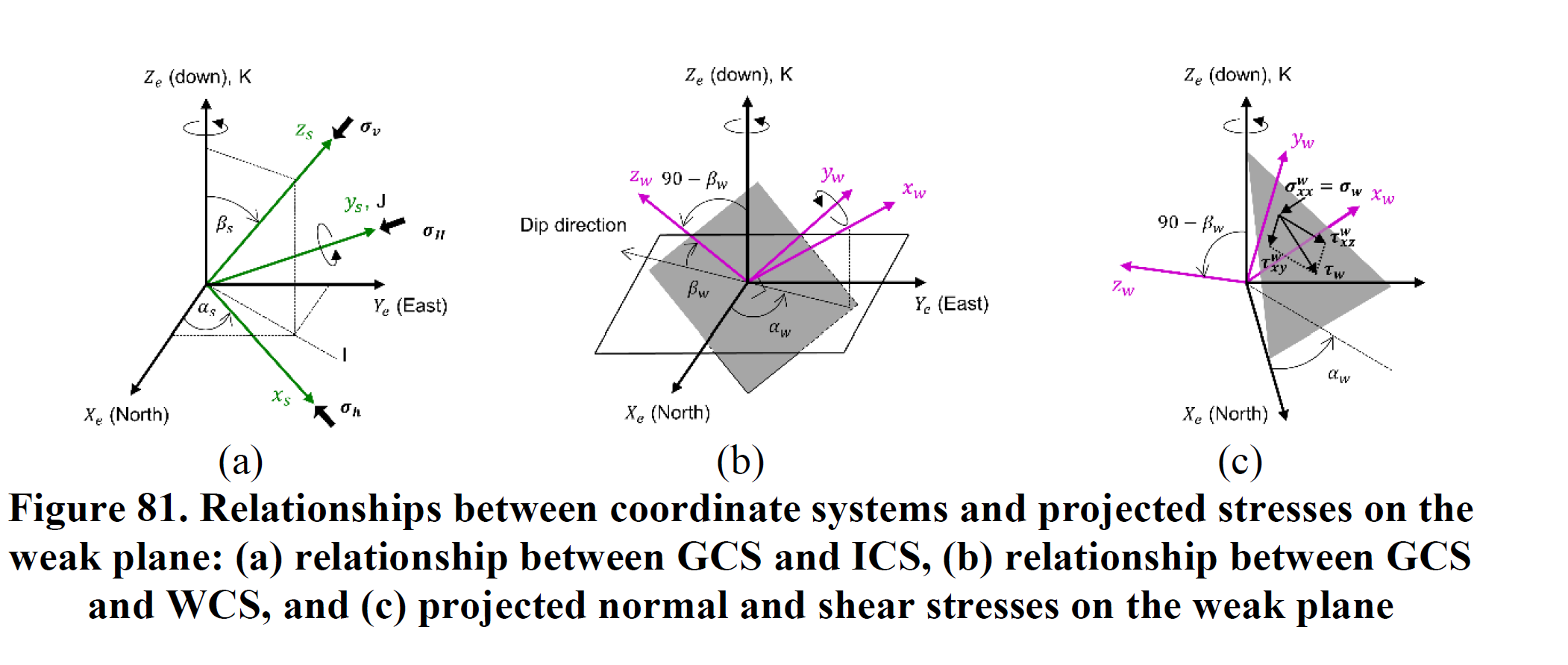COUPLED FLUID FLOW AND GEOMECHANICAL MODELING FOR UNCONVENTIONAL FIELD DEVELOPMENT OPTIMIZATION AND INDUCED SEISMICITY ASSESSMENT
流体注入和采出活动会扰动地下压力和应力场,可能导致地质材料破裂。水力压裂是一种注入高压流体的方法,用于增加紧致地层中的渗透率和接触面积,从而有效开发油气资源。理解水力压裂的几何形态、基本机制和对井口生产的影响至关重要。此外,大量处理地下水也会改变应力和压力场,可能导致深埋断层的破裂,从而产生地震并对建筑物造成破坏。因此,必须评估和管理与流体注入和生产相关的风险,以减小地震风险。
为了解决非常规油气田开发和流体诱发地震的挑战,本文讨论了耦合流体流动和地质力学模拟的研究。首先,我们开发了一种名为FMM-Sim的模拟工作流,用于水力裂缝井的历史拟合和完井优化。我们引入了压力相关的裂缝性质曲线,利用经验关系、实验室实验和理论背景模拟裂缝的扩展和闭合。因此,我们可以考虑完井设计对井口生产性能的影响。
其次,我们建立了一个混合模型,将基于物理的储层模拟和机器学习算法应用于非常规油气藏。模拟输入和输出被纳入机器学习算法,使算法能够学习底层物理规律,例如完井设计和累计油产量之间的关系。混合模型提供了快速且可扩展的应用,具有高准确性,适用于实际场地应用。
第三,我们利用单向耦合的流体流动和地质力学模拟方法,结合德克萨斯州北部Azle地区详细的断层模拟,定量评估诱发地震的潜力。我们将作业者的地震勘探结果转换为流动和地质力学模拟中的断层几何形态,并评估断层滑动和摩擦能量。然后,将断层摩擦能量与观测到的地震释放能量进行比较,建立经验地震学模型。利用该地震学模型可以预测不同注入/生产操作下的地震频率。
ABSTRACT
Fluid injection and extraction activities in subsurface result in disturbance of pressure and stress field underground. Such disturbance might intentionally or unintentionally cause the failure of geo-material. For example, hydraulic fracturing involves injection of large fluid volume with high injection pressure to enhance permeability and contact surface area for economically exploiting hydrocarbon from tight formation. Understanding hydraulic fracture geometry and underlying mechanisms and their impacts on well performance are key factors in the success of unconventional field development. Disposal of large volume of produced water into subsurface alters stress and pressure fields as well and it can cause the failure of faults in deep crystalline basement. The failure and slip along fault planes sometimes produce earthquakes which can damage properties on surface. Therefore, it is essential to assess and manage risks associated with fluid injection and production to minimize potential seismicity. To address the aforementioned challenges in unconventional field development and fluid-induced seismicity, this dissertation discusses studies related to coupled fluid flow and geomechanical modeling workflows.
First, we developed a novel hybrid Fast Marching Method-based simulation (FMM-Sim) workflow for history matching and completion optimization of hydraulically fractured wells. We introduced pressure-dependent fracture property curves, based on empirical relationship, lab experiments and theoretical background, to mimic fracture propagation and closure in reservoir simulations. Therefore, we can capture the impact of completion design such as injection fluid volume and cluster spacing on the well performance.
Second, we built a hybrid model, combining physics-based reservoir simulations and machine learning algorithms for unconventional reservoirs. The simulation input and output were incorporated into machine learning algorithms such that the algorithms can learn underlying physics between simulation input (e.g. completion design) and output (e.g. cumulative oil production). The hybrid model provides fast and scalable applications for unconventional field development with high accuracy which makes the hybrid modeling approach more suitable for field applications.
Third, we utilized one-way coupled fluid flow and geomechanical simulations with detailed fault modeling in the Azle area, North Texas to quantitatively assess potential for induced seismicity. We incorporated fault geometry based on the operator’s seismic survey into flow and geomechanical simulations and assessed fault slip and fault frictional energy. The fault frictional energy was then compared with the radiated energy from the observed earthquakes to build empirical seismological model. The seismological model was used to predict earthquake frequency with different injection/production operations.




